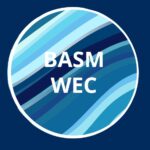Summary
Wave Energy Converters (WECs) transform the kinetic and/or potential energy of ocean waves into electricity. Among different types of WECs technologies, none of them achieves economic competitiveness. The main challenges of commercialisation of existing WECs arise from the devices’ low-performance efficiency and the WEC system’s vulnerability under harsh sea conditions. Inspired by aquatic animals’ flexible body and fins, a range of adaptive, flexible materials have attracted attention in WEC development in the past decade. The specific characteristic of such material is that its shape deforms adapting to the loading applied to it. There are several benefits using a flexible material as part of WEC structures.

Motivation
Limited materials are used
Can we find/develop functionally driven materials, suitable for WEC structures that actively or passively change their material characteristics in extreme ocean environment conditions, but are stiff enough to capture the energy under normal operating conditions?
Analysis technique is either limited or highly case dependent
Can we perform a fully nonlinear hydrodynamic loading estimation, to allow simulation of fluid structure behaviour of multiple flexible bodies in a realistic environment wave conditions?
Life-cycle assessment
A life cycle assessment for the design of functionality and new materials for more sustainable WEC is missing
The main aim of the project : To develop an analysis and laboratory testing integrity toolbox to reliably design, analyse, and process the state of the art adaptive stretchable materials and structures applicable to WECs.
Workpackages

